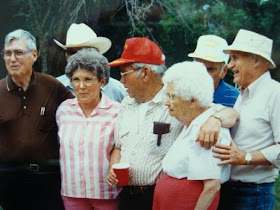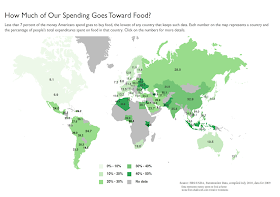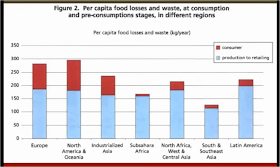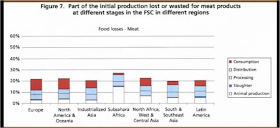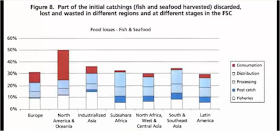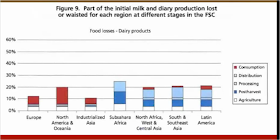 |
A cow in Hawaii
Notice the Pacific in the background |
Animal Agriculture and the Environment
As a meat producer and a mom, I hear a lot of information about animal agriculture and the environment. Some groups claim that meat production is one of the main driving forces hurting the environment. They claim that we need to go ‘
back to the start’ in food production, insinuating that we should go back to producing food the way we did decades ago.
Earlier this month, I wrote a post about the
enormity of the meat industry, and the massive numbers of animals and people it takes to keep 313 million Americans fed meat each and every day. We can’t go back to the food systems of 1950 and expect to be able to feed everyone that we have to feed today. Not only would food be much more expensive, taking our food production systems backwards would be bad for the environment.
 |
| Do you want to go back to the 1950's way of communicating? |
This week I had a wonderful opportunity to attend an agriculture symposium hosted by
Alltech, a Kentucky-based company that makes a wide variety of products used in different aspects of food production. They are a very innovative company and it’s exciting to learn about all the new possibilities in agriculture. (but, more about Alltech in a future post).

One meeting I attended at the symposium focused on the Carbon footprint of animal agriculture. There are several animal scientists and agriculturalists who have focused their research on limiting the impact that food animals have on the environment.
It’s true that producing food from animals results in the production of green house gasses. All animals breathe out carbon dioxide and cows produce methane in their stomach when they digest their food. It’s just how their systems work. Regardless of the way a farmer produces food (grass fed, organic, antibiotic free, or conventional), some green house gasses are going to be produced.
I was excited to learn one of the speakers at the symposium was my friend,
Dr. Jude Capper, author of the Bovidiva blog. But, unfortunately, the storms early in the week delayed her plane and she wasn’t able to make it to the symposium. She sent me a
link to her slides and I’ve seen her speak before. I’ve even discussed her research in my
post about the beef industry.
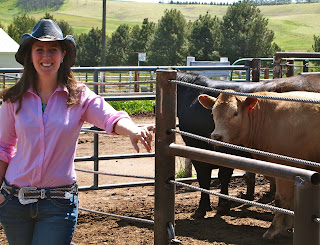 |
| Dr. Jude Capper |
According to Dr. Capper, animal agriculture contributes to 3.1% of the total US carbon footprint. I love the analogy she uses to explain the environmental impact of animal agriculture. She compares two vehicles; the first gets 5 miles per gallon, the second gets 35 miles per gallon. You automatically think that the first vehicle is an environmental nightmare and the second is a much more environmentally-friendly choice. But wait… the first vehicle is a bus carrying 50 passengers and the second is a car carrying 4. That means, that for a 350 mile trip, the bus can carry 50 passengers, getting 250 people miles per gallon, whereas the car only carries 4 and gets 140 people miles per gallon. Now, which one is better for the environment?
The same rules need to be applied to animal agriculture. The more productive an animal is, the smaller its impact on the environment.
Dr. Capper goes on to compare animal agriculture of today (her data is based on numbers from 2007) to that of 30 years ago (1977). One cow of today produces 131% of the beef that one cow would have produced 30 years ago, and each pound of beef produced requires only 81% of the feed, 86% of the water, and 66% of the land a pound of beef required thirty years ago. Using our modern practices, farmers today are producing more beef and using fewer animals and less natural resources. She goes on to say that a pound of beef today results in 80% of the manure, 80% of the methane, 89% of the nitrous oxide and has 82% of the carbon footprint that a pound of beef had in 1977.
The carbon footprint of animal agriculture will decrease when animals breed and have babies as often as possible, when they are healthy and free of disease, and they will produce much more food with improved genetics. (In animal agriculture, when we talk about improving genetics, we are not talking about creating GMO animals. We are simply talking about breeding the best to the best and getting babies that are even better. Some scientists can use the animal’s DNA to tell them which animals carry the best genes and use them to decide which animals to use for breeding.)
Dr. Capper is a big proponent of using technologies to increase the amount of food each animal produces, including feeding animals in feedlots as well as utilizing
antibiotics, hormones, and beta agonists. These have such a positive impact on productivity that one cow raised using them would produce enough extra beef to feed seven children with school lunches for a whole year! Some of these technologies are banned in Europe, but that decision results in 244 million metric tons of extra beef that must be imported to European countries each year.
Many people think that producing animals using all
grass systems would be better for the environment, but that is terribly inefficient. Animals fed only grass need about 7 more months of growing time to be ready for harvest and they are about 175 pounds lighter than those fed grain. If all US beef was produced on grass, we would need 131 million more acres of land (75% of the size of Texas) and 468 billion more gallons of water (equivalent to that used by 53.1 million US households).
When you consider how large the global food supply is and how diverse the farming practices are, it’s easy to see how small changes to improve productivity can make huge differences in the amount of total food produced. Just controlling parasites in a small, 35-cow herd can result in enough extra beef to supply 19 families with their annual beef demand. Worldwide, disease in animals causes a 20% loss.
The next speaker at the symposium (really the first speaker since Jude couldn’t make it) was
Dr. Frank Mitloehner. It was great to see Dr. Mitloehner at Alltech. He was a graduate student at Texas Tech when I was an undergraduate and was the teaching assistant in some of my classes. Dr. Mitloehner is now a leading researcher in animal agriculture and its impact on the environment. He uses the term ‘sustainable intensification’ when he discusses improving the impact of animal agriculture on the environment.
 |
| Dr. Frank Mitloehner |
He told us that the global population will triple in his lifetime and most of the human population growth will occur in the developing world. Farmers will have to produce enough food to feed 9 billion people by 2050 and they will have about the same or maybe a little less land than they have today. So efficiency is key. In the US, we have the most efficient food system in the world, meaning that our farmers produce the most meat, milk and eggs using fewer natural resources than anywhere else in the world. It takes 5 cows in Mexico to make the same amount of milk that one cow can produce in the US. That’s 4 more cows eating feed and hay, drinking water and pooping.
Developing countries are really far behind in animal husbandry, and that’s understandable. Dr. Mitloehner stated that the best way to improve the environmental impact of animal agriculture worldwide would be to help these developing countries produce food more efficiently. In the developed world, he says that the environmental impact could be improved by learning ways to utilize animal waste to produce energy. (Some farmers already
capture the gasses from their manure to produce electricity.)
Now, we know that being more productive and producing more food is good for farmers, but some countries even take it one step further. The next speaker was Aidan Cotter from the Irish Food Board. He told us about a program in Ireland, called
Origin Green that measures the carbon footprint of individual farms in Ireland and allows them to compare themselves to other farmers.

They measure the inputs and outputs of each farm and grant sustainable accreditation to farmers that are producing efficiently. Their accreditation focuses not only on carbon produced, but also measures efficiency of production, like how often the cows calve, how young they are when they have their first calf, how heavy the calves are at weaning, and how efficiently they gain. If a farmer needs a boost in efficiency, the program works with them to help them improve their farm. This accreditation is quite lucrative because beef factories pay a premium for cattle from farms that are certified as sustainable. The supermarkets that sell the beef in Europe demand beef that is produced sustainably.
During the question and answer period, Dr. Mitloehner brought up a point that I think is very important. In developed countries like the USA, 1/3 of the food we produce goes into a landfill. All the food that is wasted contributes to greenhouse gas production and the national carbon footprint, but it isn’t used. That is such a travesty. Both
Dr. Capper and I have since written blog posts about
food waste.
I hope this post was helpful. I really think that the impact of animal agriculture on the environment is something that is largely misunderstood. Please comment if you have any questions. If I don’t know the answer, I’ll find someone who does.
Both
Dr. Capper and
Dr. Mitloehner have been interviewed in the Meat Mythcrusher video series and their videos have some great insight into their research.





